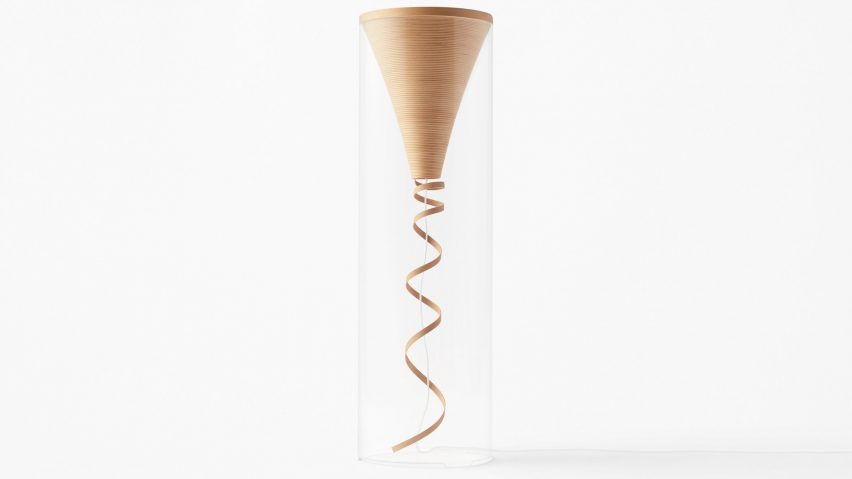
Nendo exploits acoustic properties of beech wood for transparent Bunaco speaker
Nendo has designed a wireless speaker for Japanese brand Bunaco, using a thin strip of coiled beech wood trapped inside a transparent casing.
Nendo developed the speaker with Bunaco – a company based in the Aomori prefecture of Japan, which utilises the area's abundance of beech trees for its products.
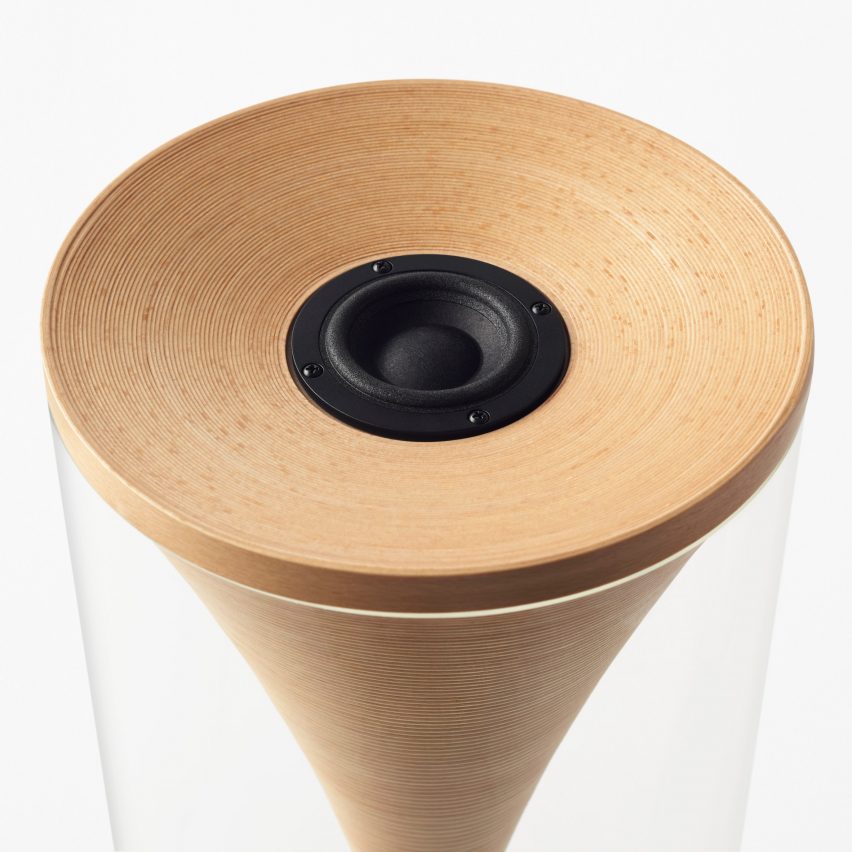
The design of the speaker sees a thin strip of the beech material coiled around a small speaker. Both of these components are then encased within an acrylic cylinder.
The tail of the coiled strip is left to dangle through the middle of the speaker, disguising a white power cable while also showcasing the craftsmanship behind the design.
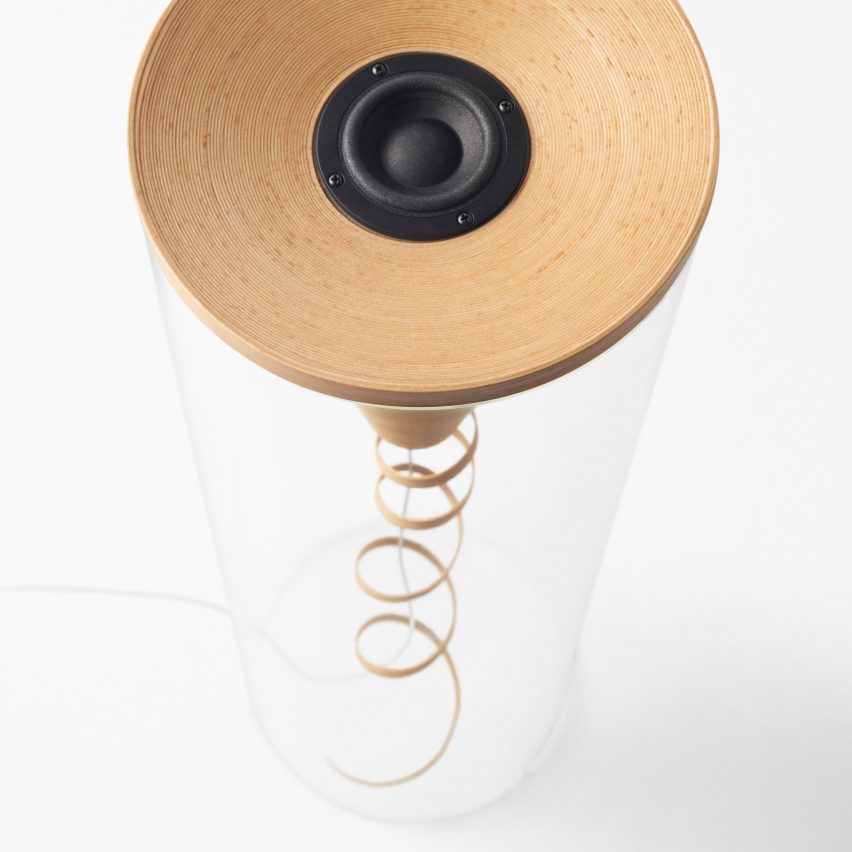
"To accentuate the beauty of Bunaco's woodwork, the speaker is supported with a transparent acrylic cylinder," said Nendo.
"The clear base makes it possible to see the unfinished edge that is left curling from the bottom, enabling users to intuitively understand the speaker's structure as well as the craftsmanship invested in its production."
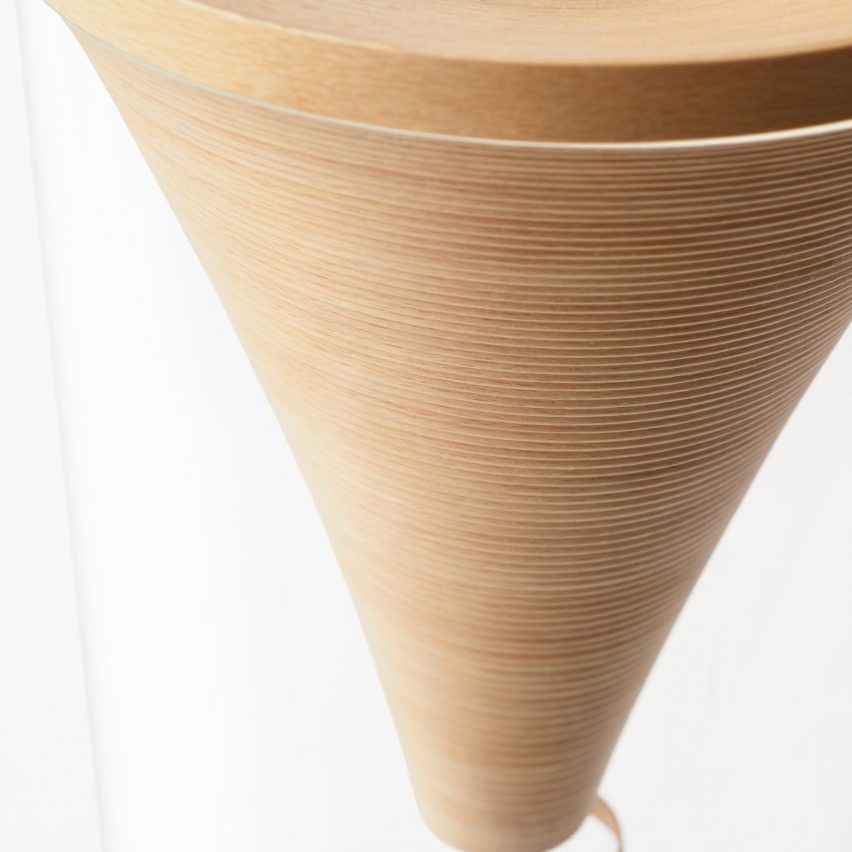
Nendo's aim was to exploit the sound-absorbent nature of beechwood.
"In addition to its use in various applications such as bowls, decorative goods and lighting fixtures, this technique is also tested for wireless speakers," said Nendo.
"As a result of the shape of the internal cavities, fine steps, and the sound absorbing qualities of the beech wood, it has been proven to produce a uniquely clear and soft tone."
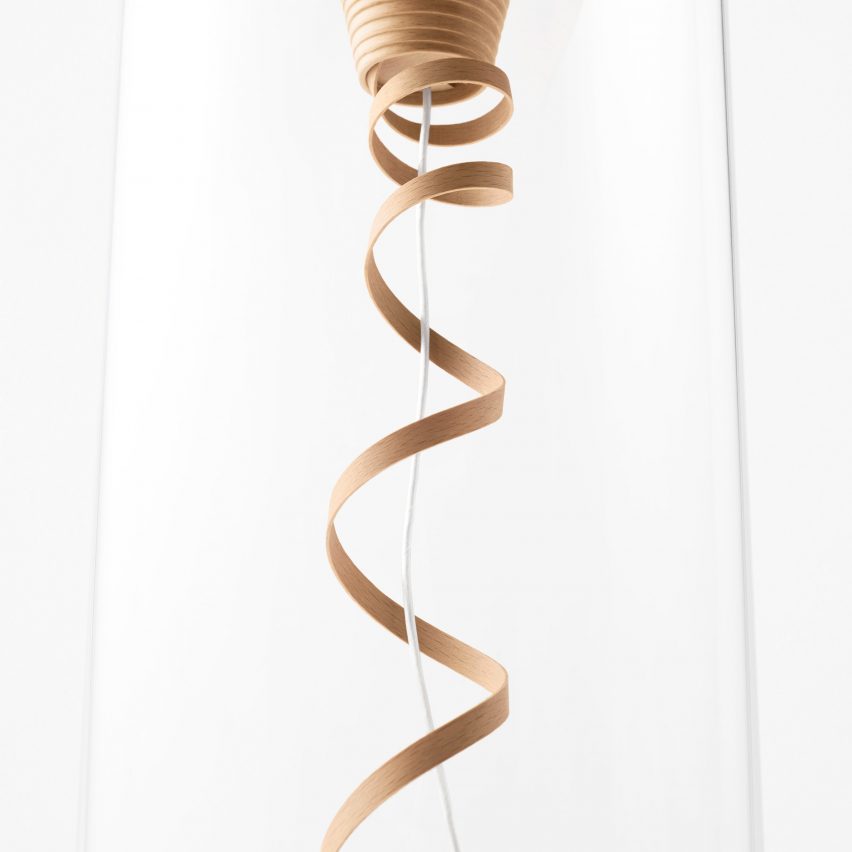
This isn't the first time Nendo, led by designer Oki Sato, has made use of traditional Japanese craftsmanship techniques to create a speaker.
The studio previously worked alongside a potter to create a flat, ceramic amplifier decorated with intricate patterns.

Using traditional techniques to create gadgets is an approach taken by Sato for other products too – the studio's designs usually avoid a high-tech look.
In an interview with Dezeen, the designer said that "technology should look like something in your grandmother's room," stating that contemporary gadgets were designed too high-tech when they should instead blend in with home interiors.
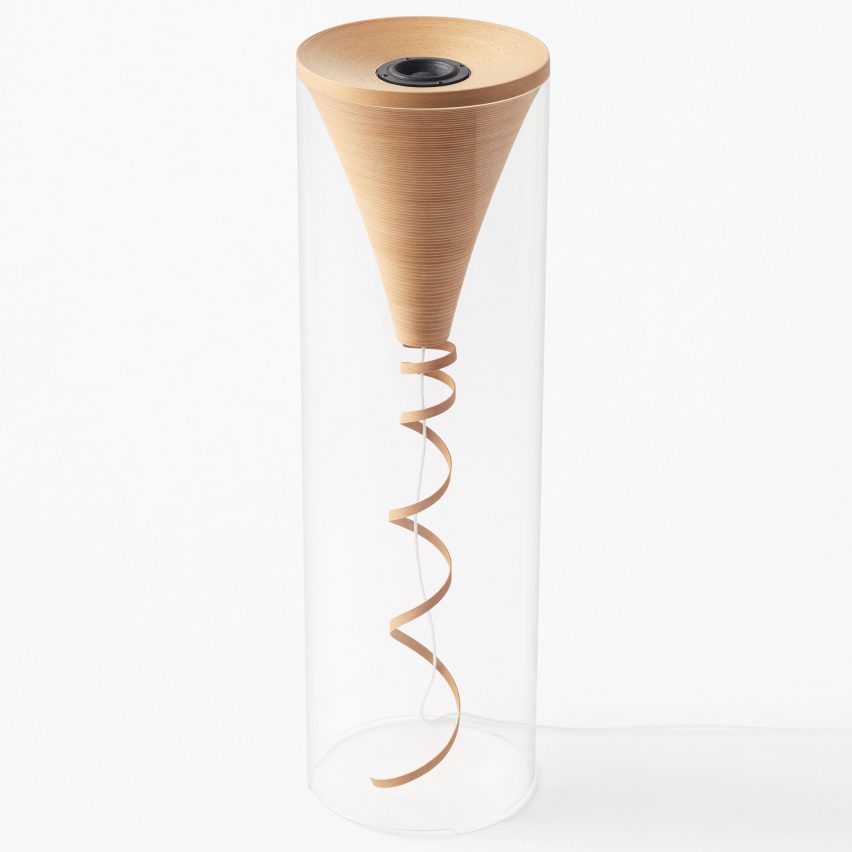
"I think the technology shouldn't look like technology; it should look like something in your grandmother's room, and it should blend into everyday life," he said. "It shouldn't distract you, and it should be linked with your feelings and your emotions."
Sato founded Nendo 16 years ago after graduating from Japan's Waseda University with a masters in architecture. The studio has become known for its unrelenting output, and has worked along some of the world's most famous brands, including Cappellini and Kartell.